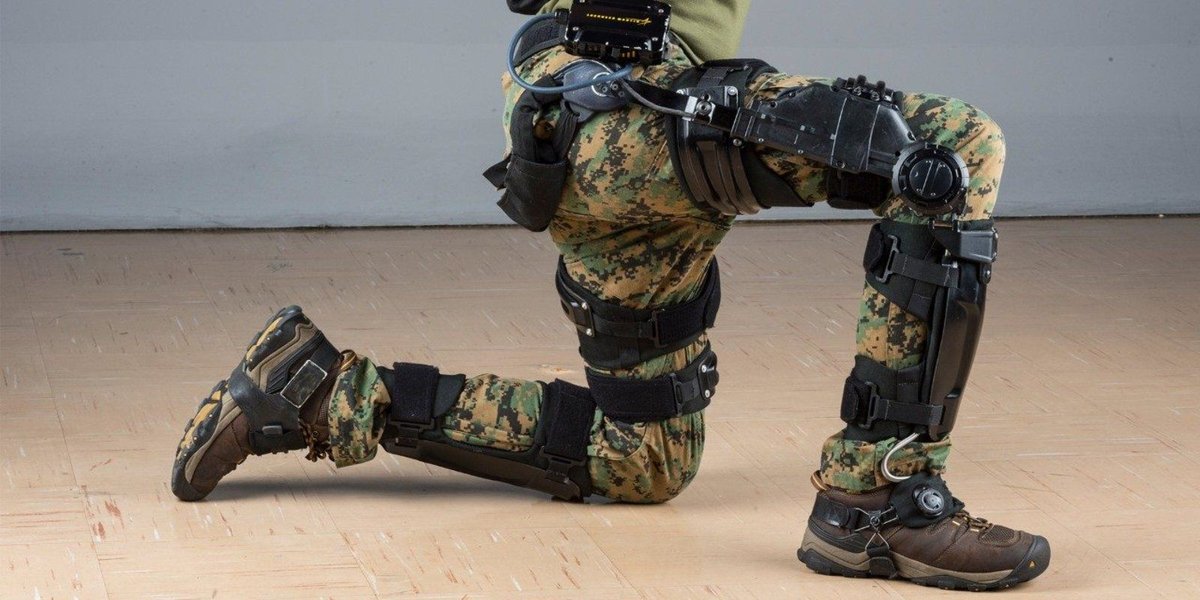THE ARMY'S NEW EXOSUIT MAKES SOLDIERS INTO IRON MAN
By Buddy Blouin

Advertisement
The quest of deciding whether or not life imitates art or vice versa continues as the U.S. Army develops exosuits to bring Soldiers one step closer to being Iron Man. Offering many benefits, the Army exoskeleton can help troops carry more weight, reduce stress on their bodies, and better execute missions. The journey is a continuous one, as not all versions of the exosuit have been stellar. Nevertheless, research is progressing, and it may be sooner than later before our Soldiers share similar traits of everyone’s favorite fictional genius, billionaire, playboy, philanthropist.
Read next: The Army’s New Tactical Bra Is the Pinnacle of Defense Support
What Is an Exosuit?
There are two different types of exosuits. The first kind goes by many names but is often known as a powered exoskeleton. We’ll be focusing on the second type for now: the passive exoskeleton. Like anything in life, there are levels to these things, so it makes sense that the Army is working on a passive exoskeleton for now, which requires the movement of its wearer to power it rather than levers, hydraulics, electric motors, etc. Passive exoskeletons use the muscles of Soldiers to move, but they'll also help Soldiers take the strain off of their back and increase lifting capabilities. The exosuit that's being developed for Soldiers is known as SABER (Soldier Assistive Bionic Exosuit for Resupply) and was approved by over 100 Soldiers who tested the exoskeleton suit at three different U.S. Army posts. Approximately one million days of duty are lost or limited each year due to lower back injuries, according to the U.S. Army Public Health Center. This innovation could eliminate that lost time entirely.Project Pathfinder and DEVCOM SC Pave the Way
The Army’s Pathfinder program is made up of Soldiers serving in the 101st Airborne Division stationed at Fort Campbell, Kentucky, and engineers from Vanderbilt University. Pathfinder is a mandated modernization program from Congress that supports Soldier-inspired technologies like SABER through research and development. The SABER has undergone many different phases, and now the prototypes are capable of assisting in heavy lifting effectively. The exosuit is a game changer that'll help reduce injuries and improve logistics for missions. SABER is now moving from the Pathfinder team to the U.S. Army Combat Capabilities Development Command Soldier Center (DEVCOM SC). The DEVCOM SC is now getting ready to manufacture and conduct field testing usage from Soldiers. In addition to providing Soldiers access to the DEVCOM SC's global science and technology network, the program offers upgrades for equipment already in use. SABER acts as a harness for Soldiers, strapping around their arms and legs. Once equipped, a button can be pressed that activates the straps and makes heavy objects easier to carry for the user.Advertisement
How Will the Military Exoskeleton Evolve With Warfare?
When you look at how exoskeletons will work, it’s clear to see that while individual suits will need tweaking, these devices are the future of warfare. Having to lift heavy things will wear out anyone. On the battlefield, this means losing human capital where it’s needed the most. Keeping Soldiers and all troops in fighting shape and preparing them to be able to work in harsh environments for longer without extensive strain means better execution for missions. An exosuit that can handle different environments will be necessary, however, as warfare continues to evolve. After decades of fighting in the Middle East, focuses are shifting to the Arctic, Pacific, and Europe. Each of these regions presents vastly different environments, objectives, and needs. Soldiers will need support no matter where they're defending the United States. It’s encouraging to see the work put in by objectives such as Project Pathfinder that light the way to helpful innovations for those serving.The Army Exosuit Will Reduce Injuries in Soldiers
One of the main goals of the Army’s new exosuit is to reduce back injuries among soldiers, but will it be able to operate effectively in the field? Warfare continues to evolve, and with it, the needs of Soldiers. Development of the military exoskeleton has faced plenty of changes, as it failed to adequately meet the needs of Soldiers in the Middle East. Now, there's optimism about the current direction, but the focus of the American Armed Forces is also on the move. Either way, a real-life Iron Man being a part of the U.S. Army continues to feel more and more a matter of “when” rather than “if.” Using an exosuit while serving won’t eliminate every risk, and there are still hurdles to overcome, but anything that helps those fighting for our freedom do so more effectively and with less risk of injury is a win for America. Suggested read: Your Guide To Navigating the Army EES PortalImage: Lockheed Martin
Written by
Buddy Blouin
Buddy Blouin is a Contributing Writer at VeteranLife.com
Buddy Blouin is a Contributing Writer at VeteranLife.com
Advertisement
SHARE:



